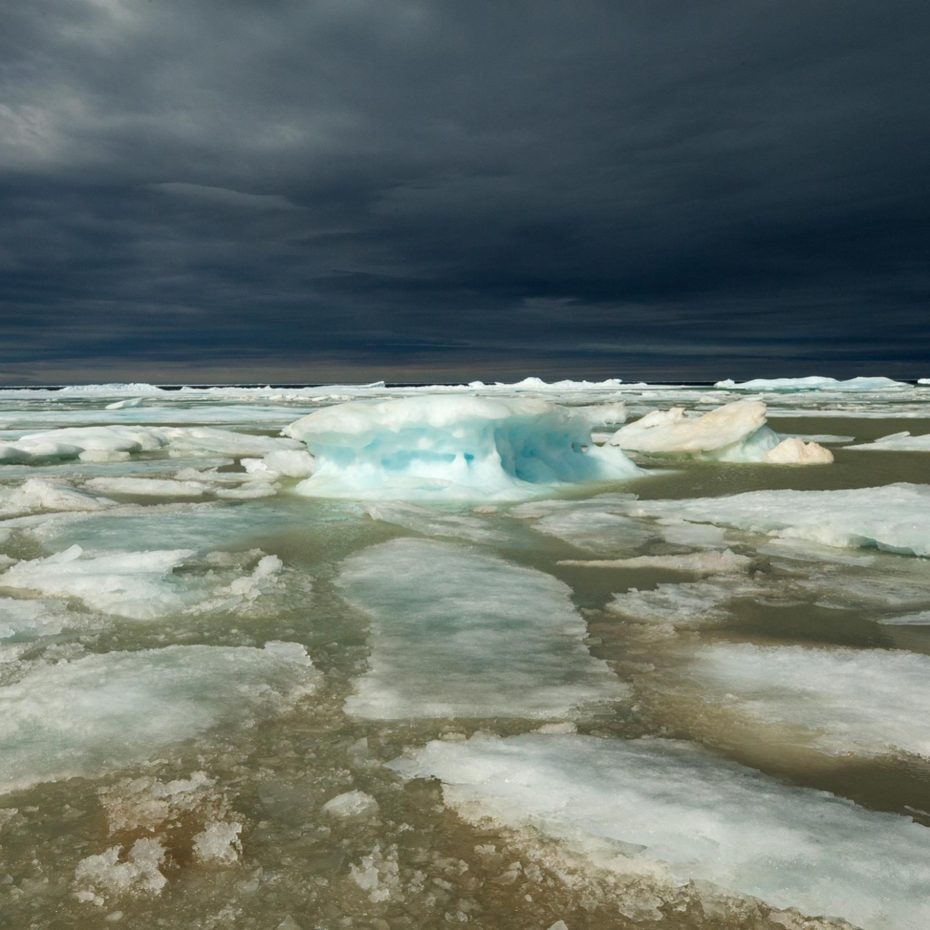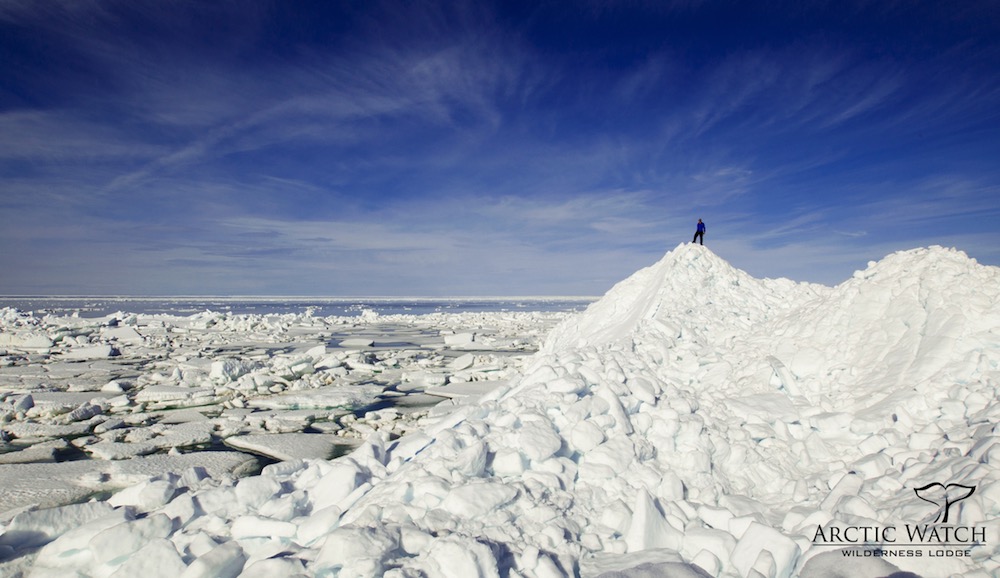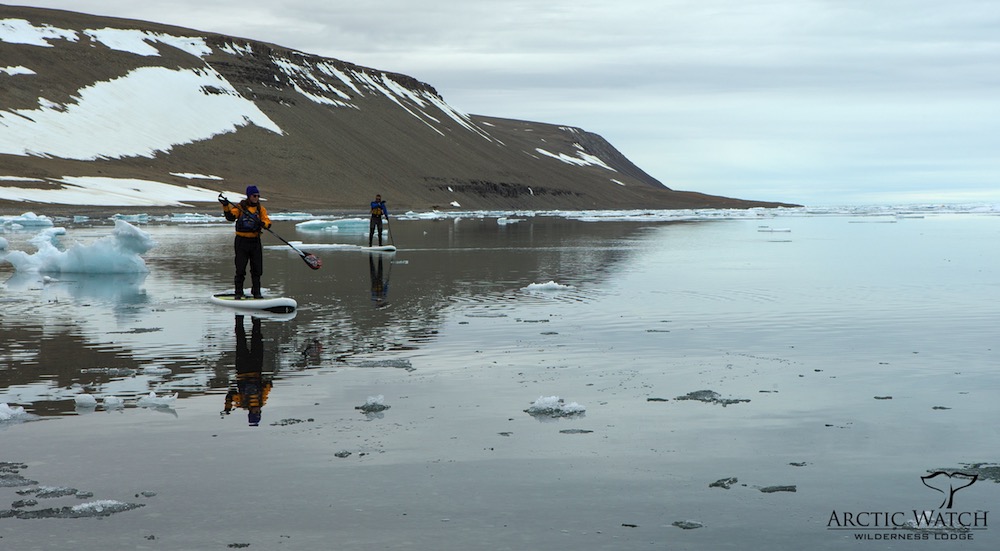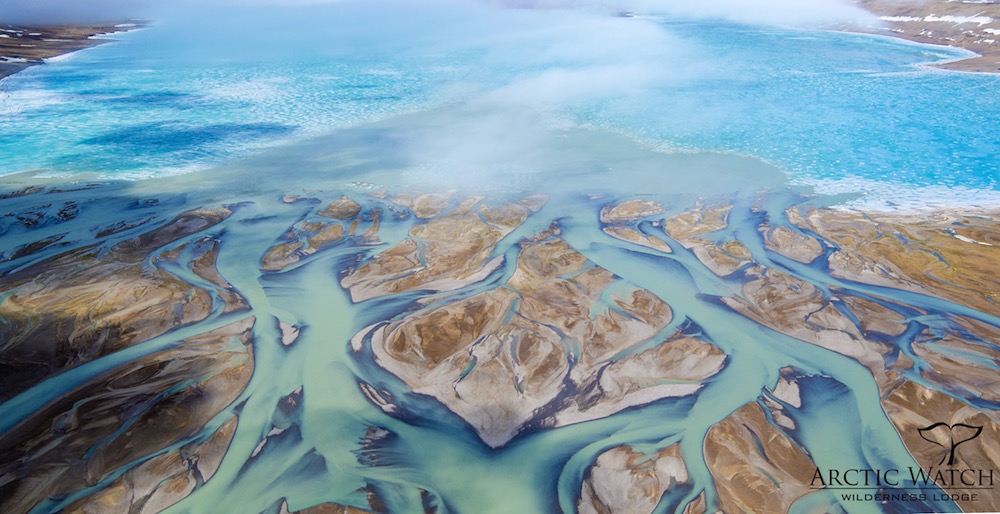THE ARCTIC: WARMER THAN EVER (AGAIN)
Press releases

Press releases
March 21, 2018 | Arctic Watch
The Arctic is warming at an extremely fast rate. Global Arctic temperatures have hit a new high, again.
Above the Arctic Circle, in the dead of winter, the sun remains below the horizon 24 hours a day. Sixty-six degrees latitude marks the boundary where the observer on the ground wouldn’t experience a sunrise or sunset at winter solstice. Of course, the absence of sun does not immediately suggest complete darkness. Civil twilight continues to illuminate the sky for hours each day. However, as you move further north, the number of days of continuous ‘darkness’ only continue to grow. Where finally at the North Pole the sun will dip below the horizon on September 25th and will not rise again until March 21st, six months later.
.jpg)
Pans of Arctic ocean ice melting in late June on the Northwest Passage near Arctic Watch. While this is a normal phenomena, the sea ice is now thinner than it ever used to be - sections of the Northwest Passage are now becoming ice-free sooner (every year).
As any 5th grade teacher might remind you, these days of darkness caused by the tilt and rotation of the earth are what make polar regions cold. In the middle of February, average temperatures in the High Arctic sit at around -30 °C as a daily high. But this year, parts of the Arctic saw drastic warming. Shocking climatologists, these record temperatures vastly exceeded any historical highs and soared 30 °C above normal. An inflow of warm air from the south resulted in above freezing temperatures at the coldest region of our planet. At one time, these extreme weather events were rare but are becoming more and more frequent.

A guest at Arctic Watch exploring the sea ice on the Northwest Passage in early July.
Sea ice is melting earlier and forming later. These changes not only affect the way of life of northern communities but also have implication on many animals who have carved out a highly specialized niche in the Arctic. While the media often points to polar bears, who rely on the sea ice to hunt, other animals such as muskoxen are vulnerable to warming temperatures which can cause freezing rain. More on that can be found on our blog.

SUP on the Northwest Passage near Arctic Watch
This warming trend is only going to continue. As more ice melts, open water absorbs heat rather than being refracted by snow and ice. In turn, this increases surface temperatures which allows the air to hold more moisture. More moisture means more storms which is altering weather patterns and the jet stream, creating a self reinforcing feedback loop that brings further heat and moisture to the Arctic. NASA’s Operation IceBridge has been conducting aerial survey’s of polar ice caps for nearly a decade. This dataset is available to the public and showcases the changing Arctic environment.

Every summer, as the sea ice retreats in early July, the beluga whales arrive in Cunningham Inlet. Cunningham Inlet’s ice is melting sooner - as a result, the belugas are generally arriving sooner.
At Arctic Watch, we’ve experienced our share of warming over the past twenty years - the permafrost around Cunningham Inlet has receeded noticeably, warmer temperatures are bringing mosquitoes (which we never had before; now about 5 days per year) and new species of birds (that normally “summer” 1500km south of Arctic Watch). We now have an extra ten days of summer compared to when we first started!
We understand that booking a trip like this is a big endeavour. Please reach out to us with any questions that you might have regarding your upcoming adventure.